

Cultural Loot
Between 1850-1900, Western archaeologists dug up more than 400,000 clay tablets in West Asia. This loot was carried back to the British Museum, Louvre France, Imperial Museum in Berlin, University Of Pennsylvania. Latter day digs and finds were retained Iraq, Turkey and Egypt. Less than one fifth have been published so far. In the last 100 years, more than 400,000 clay tablets were excavated - and less than a 70,000 have been deciphered between the four institutions.
The vandalism of Napoleonic army in Egypt and the pilferage of cultural artifacts has been well documented. The Rosetta Stone, the Dendera Zodiac, Cleopatra’s Needle were among the booty from Egypt that the disastrous campaign of Napoleon yielded. Edward Said described the Anglo French Egyptian loot, as “that great collective appropriation of one culture by another”
Extreme competitive behaviour in business, economic activity, trade, colonization, did not stop Germany (repository of the Akhmim Kodex) and Britain (Bruce Codex and Askew Codex) to collude with the Vatican in keeping the Pistis Sophia (which reveals the deep Indic /Buddhist influence) from reaching the public domain. It took the Nag Hammadi and the Dead Sea S+crolls to blow this entire ‘conspiracy of silence’ apart.
Usurping The Aryan Achievements
While the Britain and the France, for colonial reasons, were ‘discovering’ the Greek miracle, Germany and the USA started ‘discovering the ‘Aryan’ roots’ to Western civilization. Martin Bernal, the author of ‘Black Athena: The Afroasiatic Roots of Classical Civilization’, explains Western “amnesia” due to replacement of Europe’s “Ancient Model” of historiography with the “Aryan” model. Simply speaking, the West has replaced Egypt as the source of culture with the Aryans. The fact is that neither the cultural achievements of Egypt (from Africa) nor of the
Aryan (from India) are for the West to arrogate to themselves.
A writer on this phase of history, Susan Marchand says, “The Aryan industry, of course, burgeoned. Even the former Kaiser Wilhelm II, in exile, took up the study of the Orient … In a 1928 letter to his friend, the former emperor reported a recent conversation with Oswald Spengler in which Wilhelm had tried his best to convince the herald of Western doom that “we are orientals [Morgenländer], and not westerners [Abendländer].” (Bold letters, italics, ellipsis mine).
Pre-Hitler ‘Aryans’
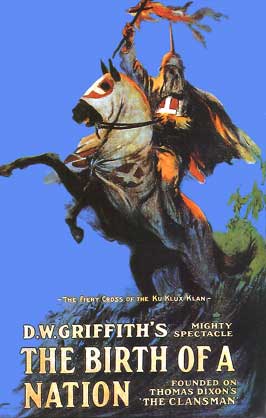 Hitler was not the first (or even the last) to try and usurp Aryan legacy. Aryan history of languages, culture, spread of civilisation, its science and technology appealed to many in the West - and especially White Supremists.
Hitler was not the first (or even the last) to try and usurp Aryan legacy. Aryan history of languages, culture, spread of civilisation, its science and technology appealed to many in the West - and especially White Supremists.
One hilarious example of this kind Charles Morris (writer of The Aryan Race: Its Origins And Its Achievements By Charles Morris.). If this book was not a best seller, as ‘history’, it would surely have been best seller as a comedy. Another book - based on the Aryan Invasion Theory, was Lectures of the Arya By Albert Pike.
A set of books written by L. Austine Waddell - again had a single point agenda of usurping Aryan achievements and culture. Wadell declared, “the Aryan Race — now chiefly represented in purest form in North-western Europe.”
Another instance of this is the 1915 film, DW Griffith’s ‘Birth Of A Nation.’ One of the first big hits from Hollywood, this film on the ‘Knights of the Ku Klux Klan’ enjoys cult status. D.W. Griffith’s film The Birth of a Nation was based on a book by Thomas Dixon, Jr. titled The Clansman - An Historic Romance of the Ku Klux Klan - written in 1905. Dixon thought (from the book preface) that the rise of the Ku Klux Klan (KKK) was the “most dramatic chapters in the history of the Aryan race.” Later, this peice of racism was replaced by another phrase - “Carpetbaggers’ political folly” in the film.
In the climactic scene, these KKK knights ride to the rescue of the the whites, Whites from North and South, to the blaring sounds of Wagner’s `Ride of the Valkyries.’ Yes, the same music that was Hitler’s favorite. The common enemy of the united ‘Aryan Whites’ is the liberated black soldier. The original screen title gives the viewer the message: “The former enemies of North and South are united again in common defense of their Aryan birthright.”

Remember, this was while Hitler was a poor corporal in the army during WW1 - and the Nazi party was yet get its milk teeth.
Thomas Huxley in “The Aryan Question,” published in the Nineteenth Century Magazine, 1890, page 766:—“There was, and is, an Aryan Race, that is to say, the characteristic modes of speech, termed Aryan, were developed among the Blond Longheads alone, however much some of them may have been modified by the importation of non‑Aryan elements.”
After, WW2, it has become politically incorrect for any White to call themselves as Aryan - but that has not stopped White Supremacists. There are many White Supremist gangs in the USA, that call themselves Aryan.
Behind The Dacoity
Euro zone has, mostly, covered itself with borrowed feathers. Euro-colonial powers, like Britain and France, traced their lineage to Egypt (Africa), Greece (The Mediterranean), Rome and pre-Renaissance Italy. Germany and the USA, undermined the Anglo-French colonial position, by creating the ‘Aryan Roots’ theory for the Western civilization.
The West, has been been a leading player in the ‘cultural dacoity’ game - especially the four BFAG countries of Britain, France, Germany and in in modern times, America has joined this ‘cultural dacoity’. The four BFAG countries (Britain, France, America, Germany), are loathe to credit anything to any other culture - even to their Iberian competitors. As per
BFAG historiography, the interesting sub-text is that all Iberian achievements are due to the West African (Negro) rule prior to the rise of the Iberian Empires. Just imagine that - the Iberians learnt everything from the Blacks seems to be the thrust of this historiography.

Old Mother Hubbard
Their own history being a barren cupboard, these BFAG countries raided other cultures.
First, they sanitized the records of books that the Greeks borrowed from other cultures - and never returned. These ‘unreturned’ books were later ascribed to the Greeks.
A Balkan general, from an obscure part of Eastern Europe, Macedonia, was Hellenized. Alexander, became a Greek conqueror of the world. It would be similar to the Chinese claim to Genghis Khan’s Mongolian Empire.
Hipparchus Of Nicaea /Bithynia /Rhodes (in modern-day Iznik, Turkey) was another ancient (so-called) ‘Greek’ who is claimed as one of their own by modern West. Most of his work was based on the Chaldeans systems from Babylon. Eudoxus of Cnidus (in Turkey), learnt astronomy in Egypt, and claimed by the West as a Greek and one of their own. Ptolemy was born, lived, learnt, worked and died at Alexandria in Egypt - claimed by the West as their very own, a Greek.
For instance, the Pythogoras theorem is not Greek and definitely not Pythogoras’. Pythagoras was a native of Samos (off the coast of modern Turkey), bordering the Hittite Empire. He travelled to Babylon, the Elamite Kingdoms of Persia at that time. His inner circle of followers lived like Indian brahmacharyas in a Mathematikoi (meaning “those who know”, from which the word mathematics comes; possibly related to the Indian मठ Mutth) “); not allowed any personal possessions, wore their hair long, were vegetarians and observed strict rules of silence (मौन).

Imhotep, a Black Egyptian became Aesclepios. Ibn Sina became Avicenna. Abū Bakr Muhammad ibn Zakarīya Rāzi became Rhazes, Abul Qasim Khalaf ibn al-Abbas al-Zahravi became Albucasis. To muddy waters, the Indian mathematical and numeral system became the Arabic numeral system.
All this so-called ‘Greek’ learning came from Babylon-to-Greek-to-Arabic-to-Latin manuscripts. Greeks, Romans, the Church major destroyers of books and learning, became voracious dacoits in the recent past - without as much as by your say so.Roman usurpers (of the Balkan Empire) were glamorized - to the point of becoming stars in the glam rock show of Anglo-French-German history.
As modern West became aware of Aryan achievements, Europe suddenly discovered their Aryan roots. European languages derived from Sanskrit became Indo-European (Indians should be grateful that at least these were called Indo-European - and that Indic languages were not charged with plagiarism). Of course, the whole of Europe is Aryan - and India is inhabited by alien conquerors.
Rome’s legacy!
From Rome we get a slave owning, loot-oriented, blood-thirsty line of rulers. An empire gave birth to 1500 years of Church persecution.
Emperor Constantine after his victory at Milvan bridge, extended State patronage to Christianity. For the next 1000 years Christianity was racked by challenges from Buddhism - most prominently, the Manichean Sect. After centuries of persecution and massacre, non-believers became extinct in most of Europe. The Church itself became very powerful - and a breeding ground for corruption and nepotism. Ripe for the reformation.
The Iberian Colonization

1492. The (largely) benign rule of the
West Africans Negros, came to an end. White Christian rulers of Spain, Isabella and Ferdinand, set historic standards in persecution and extortion. More than a million Jews were killed, crucified, burnt alive; their properties confiscated and distributed.
Christian Spain, fresh from their victory over West African Negro (Muslims) rulers, (then called Moors), obtained the backing of the Church for expansion. The Church Of Rome, eager to add new followers, approved a Papal Bull. Spain and Portugal were given a duopoly on European exploration of new markets and believers in Christian religion.
The same year, Christopher Columbus set sail westwards to find a trade route to India. A few months later he landed at Bahamas - and reported the western trade route to India. The West realized (much later) that this was, for them, a new continent - now called America.
And modern colonialism was born. Out of Iberia - the Portuguese and the Spaniards. Loosed on a unsuspecting world by the Papal Bull. Spain and Portugal, the two then superpowers (until early nineteenth century), competed to get various Papal Bulls issued in their favour - often contradictory.
Many negotiations and treaties later, the world was divided between Spain and Portugal. Spain and Portugal quickly expanded their empires and operations. The Papal Bull gave the two Iberian powers, a duopoly over ‘Christian’ conquest - but also hobbled them with a religious agenda. Hence, the pre-occupation by the Iberian colonizers to convert the ‘heathens’.

Reaction From Rest Of Europe
Was the exclusion of Britain, France and Germany from this Papal Bull, the reason for the support of Protestantism in these countries. Why did Henry VIII change - from a Defender Of The Faith, to revolt against the Church?
After the grant of duopoly to Spain and Portugal, by the Church Of Rome, England declared open season against Spanish ships. High seas piracy - with the sanction of the English State, became a national pastime in Britain. After the break with Vatican, during the reign of Henry VIII, no longer tied by Papal injunctions and diktat, the English decided to challenge Spain. In 1600 The English East India Company (EEIC) was formed to spearhead English trade with India. By 1650, EEIC obtained the Royal Firmaan from Shah Jehan to operate in India - and compete with the Iberians.
Initially, in matters of religious conversions the English copied the Spanish. The Chairman of the Directors of the East India Company, Ross Donnelly Mangles, piously declared in the British House Of Commons -
“Providence has entrusted the extensive empire of Hindustan to England, in order that the banner of Christ should wave triumphant from one end of India to the other. Everyone must exert all his strength that there may be no dilatoriness on any account in continuing in the country the grand work of making India Christian.” (this and the following apt quotations, were pointed out by Parag Tope).
It took the Haiti Revolution to start the end of the Spanish Empire - and the 1857 War Of Independence in India to end the English campaign to ‘convert the heathen’ and ‘civilize the pagan Hindoos’. After the 1857 War Of Independence, the Colonial India Government printed leaflets in tens and thousands confirming the British policy had changed. One commentator noted, these leaflets informed the local Indian population that “that she (Queen Victoria) would not interfere with the religion of the native, or countenance any favouritism in matters of faith.” (bold letters mine)
The overwhelming, last impression of the British Raj, wrongly, was that in matters of faith, the British Colonial Government was neutral. Angus Maddison writes, in The Economic and Social Impact of Colonial Rule in India
“British imperialism was more pragmatic than that of other colonial powers. Its motivation was economic, not evangelical. There was none of the dedicated Christian fanaticism which the Portuguese and Spanish demonstrated in Latin America and less enthusiasm for cultural diffusion than the French (or the Americans) showed in their colonies. For this reason they westernized India only to a limited degree.”
It was the fierceness of the the 1857 War that made the British rulers change their policy. More racist, propaganda and cultural baggage came later - to gain better traction at home and in the colonies. For instance, Priya Joshi, a researcher shows that after 1857, book shipments from Britain to India increased by a factor of three.
The Collapse Of The Iberian Empire
For roughly 250 years, the Iberian Empires were the most powerful. The slave rebellion of Haiti triggered a collapse of the Spanish colonies in South America. Simon Bolivar, aided by the Haiti’s rulers, initiated decolonization movements across South America - leading to the demise of Spanish Colonialism. The last nail in the Spanish colonial possessions was Cuba - which they lost after the Spanish American War. After the loss of Cuba, Philippines and the American colonies, and the end of slavery, the Iberians imploded much like other slave societies.
Anglo Saxon Trajectory
The Anglo-Saxon Empire was tracing the Iberian trajectory - with a 100 year interregnum. Hundred years after the collapse of the Spanish Colonial Empire, the British Empire started disintegrating - like its Iberian predecessors. Like the revolt in Haiti, the Boer War, signaled the beginning of the end for the British Empire. For similar reasons. Loss of slaves and colonies. The rise (and implosion) of the French, English colonial possessions tracked the Iberian trajectory by a lag of a 100 years.
Of course, Anglo-Saxons gloat over the collapse of the Iberians. And have waged a steady propaganda war to show the Iberian colonizer in poor light. The BFAGs give no credit for the Iberian contribution to Western culture - and all Iberian achievements are due the West African (negro) rule prior to the rise of the Iberian Empires.
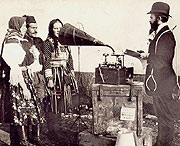
Birth Of Western Music
The Roma-Gypsy contribution in the growth of Western musical tradition has been blanked out from Western history. The spread of Gypsy populations across Europe by the 16th century coincides with the birth of Western music systems - a stripped down version of the 3000-years old Indian music structure.
Hungarian music was Gypsy music arrogated by the White Christian majority to itself - and resented the Gypsy music culture. Western military music came from gypsy music bands of Turkey, Austria and Hungary . Carefully hidden is Bela Bartok’s research into ‘folk’ music and ‘inspiration’, as is the source of Franz Liszt’s Hungarian Rhapsody - a by product of Gypsy music. Befre that, Verdi wrote the Il Trovatore, in 1853, a story about the clash between the White Christian Spain and a band of Gypsies. Georges Bizet’s, Carmen, another opera about the love of a Spaniard and the Gypsy, Carmen, used Gypsy music and themes considerably - apart from the story itself.
After WW1, when parts of Hungary folded into the Austro-Hungarian Empire, Bartok’s access to his ‘inspiration’, the Gypsies (and their music) was also cut off, his music compositions also declined. In the true ‘cultural dacoity’ mode, Bartok (after emigrating to USA), covered his tracks and found ingenious ways to deny the Gypsy influence. Between Bela Bartok, Zoltan Kodaly and Leos Janacek, they recorded 6000
Gypsy tunes on wax cylinders. The wax cylinders on which Bartok, Zoltan Kodaly and Leos Janacek copied Gypsy music are now sought after items.
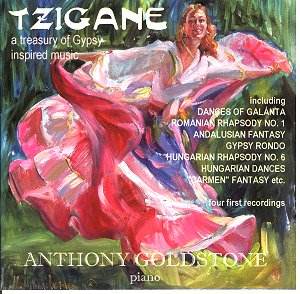
It is the dances of the Roma Gypsies behind the European cultural icon - the Flamenco! The rumba and the tango. It is the Gypsies (along with the Arabs) who brought Indian music systems to Europe - based on which the Western music system developed over the last 300-400 years. The iconic guitar is a modified Indian musical instrument - brought to Europe by the Gypsies, which the West tries ‘passing off’ as their own. Hittites, the Indo Aryans of the Middle East, before the Gypsies had an instrument similar to the guitar. Why am I not surprised when flamenco style, Gypsy music group, Los Del Rio’s Macarena became a big hit in India. This contribution to modern and classical Western music by the Euro Gypsy remains unacknowledged - and the Western arrogation continues unmitigated.
The Gypsies In Provence
Modern day Roma Gypsies made their first mark in Europe in Provence. The richness of the Roma Gypsy music (of India) overwhelmed the people of Southern France. They whole heartedly, assimilated the Gypsies (then known as troubadours) and their culture - warmly. 500 years later, across a
bleak Europe, the French poet Voltaire, the English WB Yeats, lamented and longed for Provence and the richness of the Provencal culture. Modern French cuisine, wine culture and tradition took root in this very area - and survived in spite of the best attempts by the Church to exterminate it in the Albigensian Crusade.
Black Contribution To Modern Technology
An interesting post on Racism & Technology by Michelle M. Wright in the Switch adds to this thesis. This post lists the large number of contributions made in modern times by the Blacks - totally unacknowledged.
Consider a handful of the contributions that African-Americans have made to science and technology: we have forgotten that Granville Woods invented the steam boiler furnace, the telephone transmitter; Sarah Boone invented the ironing board; Mary Moore invented one of the first artificial pain relievers in the 18th century; Lewis Latimer invented the incandescent light bulb (greatly improving on Edison’s
use of a bamboo filament by replacing it with carbon, and therefore making light bulbs last from a mere 30 hours to over 300), and he supervised the implementation of electric lights in New York City, Philadelphia, Montreal, and London; we have forgotten that Garrett A. Morgan invented the prototype of the gas mask and the automatic stoplight; Frederick Jones made the transportation of fresh foods and dairy products possible when he invented mobile refrigeration; Elijah McCoy made it possible for locomotives to operates continuously without having to stop every few miles to re-lubricate the wheels and machinery. Despite the attempts of corporate competitors to duplicate his invention, only McCoy’s actually worked, causing railway engineers to always ask if the automatic lubricator available for purchase was “the real McCoy”-this phrase has been re-attributed to several white McCoys: an athlete, an entrepreneur, and an inventor whose inventions were never actually used by anyone. The only black inventor America acknowledges is George Washington Carver who revolutionized Southern agriculture by developing crop rotation so that farmers did not exhaust their soil after three years but could use it endlessly (indeed, early crop rotation was taught by the first African-Americans to white planters). Carver also developed peanut oil as cheaper alternatives to
motor oil, diesel fuel, printing ink, rubbers, and lighting oil…but he is only famous as the inventor of peanut butter. More recently, A. P. Ashbourne developed the airplane propeller; Dr. Charles Drew discovered plasma in blood; Henry Sampson patented the cell phone; Otis Boykin developed pace maker controls for the guided missile, and Dr. Patricia Bath has patented her technique of using laser surgery to remove cataracts. (from the Racism And Technology By Michelle M. Wright).
This systemic ‘amnesia’ in the West points to two things - a barren cultural cupboard and the plagiarsitic arrogation by the West of the achievements made by other cultures.

Selective Leaks
What is it these four institutions hiding? My feeling is that while these guys sit on these finds, they would have imploded - and their worst fears would have become reality. They would be another footnote in the history of slave owning civilizations that imploded. Hopefully Indic countries, based on humanity would have become an intellectually-dominant civilization again!
Coming To Dacoity
Dacoity is a uniquely Indian-English word - made, formed and used in India. Dacoits were (and are) outlaws operating at the periphery of morality - and the law. These brigands were a response to the shrinking opportunity base due to colonial practices (some of which continue) in India. These dacoits typically did not target the State itself or the poor.
The target of the dacoits were the beneficiaries of the system - the rich. Since, the dacoits did not directly challenge the might of the State, the State was not very worried about these dacoits. But loot, these dacoits did. Especially the rich. Hence, the Indian population has viewed dacoits ambivalently.
 The interesting statistic (graphical representation by Catherine@Visualizing Economics) in this chart is the cycle of Western Europe GDP. This, you will note, largely tracks the rise and fall of slavery and its proxy, colonialism. The rise of the West has been a case of ‘consumption’ of slaves to fuel their economic rise. Note the rapid fall in Western Europe incomes and GDP after loss of slaves and colonies - starting from 1850s (decline in slavery begins) till the 1950 (when decline in colonialism begins).
The interesting statistic (graphical representation by Catherine@Visualizing Economics) in this chart is the cycle of Western Europe GDP. This, you will note, largely tracks the rise and fall of slavery and its proxy, colonialism. The rise of the West has been a case of ‘consumption’ of slaves to fuel their economic rise. Note the rapid fall in Western Europe incomes and GDP after loss of slaves and colonies - starting from 1850s (decline in slavery begins) till the 1950 (when decline in colonialism begins). 


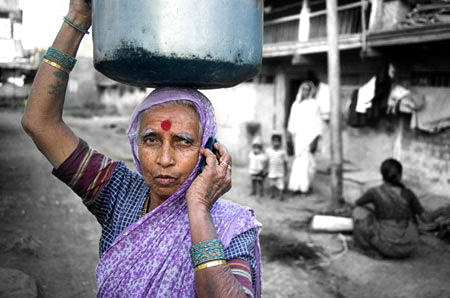 By 2000, India had less than 4 crore phones. Most of the 100 crore (1billion) Indians were unconnected - and disconnected from the world. Governments monopolies, BSNL and MTNL, ruled the roost. Pricing was based on scarcity - rather than any commercial costing or margin strategy.
By 2000, India had less than 4 crore phones. Most of the 100 crore (1billion) Indians were unconnected - and disconnected from the world. Governments monopolies, BSNL and MTNL, ruled the roost. Pricing was based on scarcity - rather than any commercial costing or margin strategy. By 2001, the BJP led Government came to power. The telecom regulator in a series of bold moves, changed policies - and equations. Tariffs declined by nearly 5000% - from roughly 50 cents to 1 cent per minute. User base ballooned to 20 crores - from 4 crores. In 7 years more telecom users were added than in the previous 70 years. For the first time, the poor in India are beginning to benefit from technology.
By 2001, the BJP led Government came to power. The telecom regulator in a series of bold moves, changed policies - and equations. Tariffs declined by nearly 5000% - from roughly 50 cents to 1 cent per minute. User base ballooned to 20 crores - from 4 crores. In 7 years more telecom users were added than in the previous 70 years. For the first time, the poor in India are beginning to benefit from technology. During WW2, nearly 40% rolling stock from India was
During WW2, nearly 40% rolling stock from India was 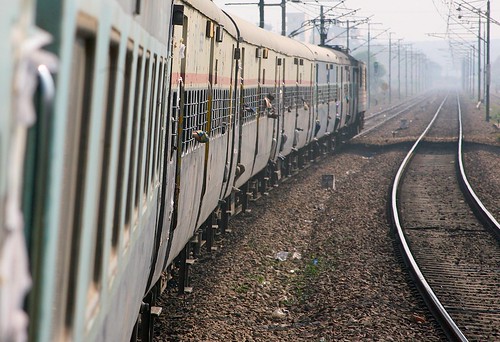


 Of course, the Western zeal for free trade extends to enforcing opium trade (just ask the Chinese). Kishorebhai, I only wish, as an ignorant Easterner that we in India can enforce ‘free trade’ in opium today in USA and the Europe.
Of course, the Western zeal for free trade extends to enforcing opium trade (just ask the Chinese). Kishorebhai, I only wish, as an ignorant Easterner that we in India can enforce ‘free trade’ in opium today in USA and the Europe.

 Similarly, if the Gypsies had not left India, (supposedly) a thousand years ago, they would have lost all the benefits of Western civilization.
Similarly, if the Gypsies had not left India, (supposedly) a thousand years ago, they would have lost all the benefits of Western civilization.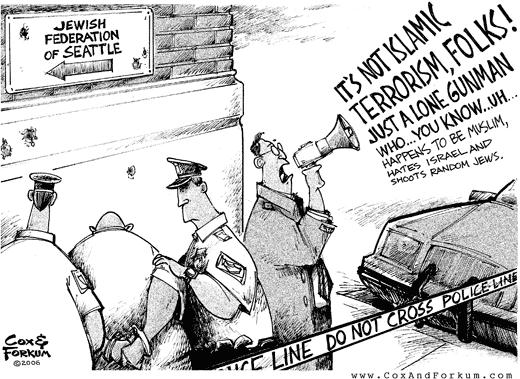 7.Education
7.Education

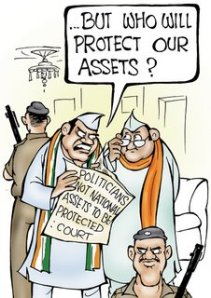

 Behind Indian Success
Behind Indian Success

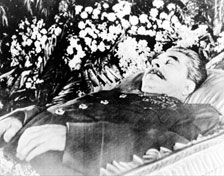

 The Communists went ahead and formed the world’s first elected Communist government (the State Government in Kerala). Suddenly, communism looked a lot closer.
The Communists went ahead and formed the world’s first elected Communist government (the State Government in Kerala). Suddenly, communism looked a lot closer.
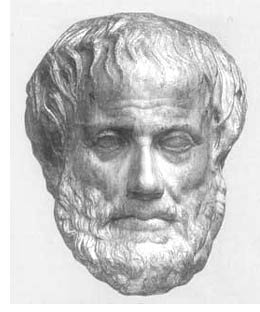
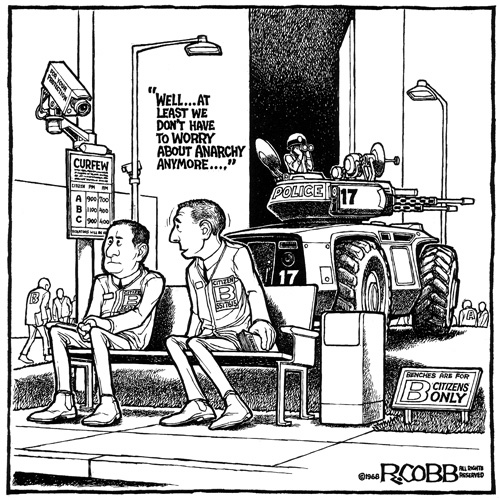
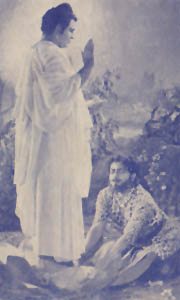

 Many successful films were made revolving around these dacoits. Sunil Dutt built his career around dacoit films like
Many successful films were made revolving around these dacoits. Sunil Dutt built his career around dacoit films like 

 Criminals, technically, had a free run of the city. Much like
Criminals, technically, had a free run of the city. Much like 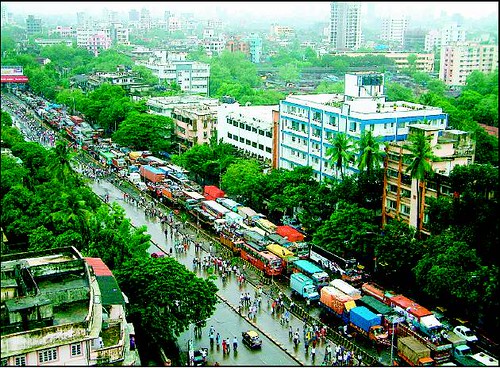 Criminal As A Human
Criminal As A Human









